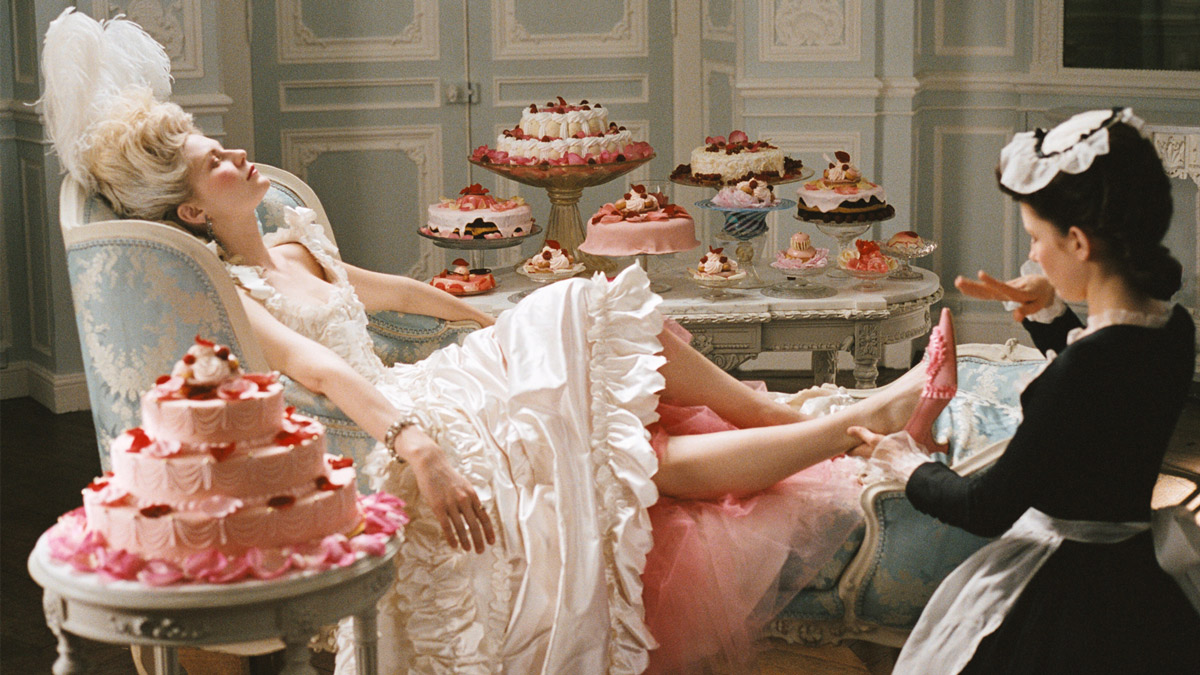2023.03.22
fashion show
The "handover ceremony" in "Marie Antoinette" is symbolic because the process of being stripped of her clothes and changed into a costume not only depicts the process of a girl turning into an adult woman as a rite of passage, but also serves as a metaphor for the "fashion show" that Marie Antoinette will soon be showing at the Palace of Versailles. Marie Antoinette is dressed as if she were a model in a fashion show.
Just as the first shot of this film, in which Marie Antoinette sits on a sofa and has her shoes put on by a maid, is a homage to Guy Bourdin's fashion photography, fashion photography and advertising photography are a major source of inspiration for Sofia Coppola. Sofia Coppola was particularly obsessed with giving movement to still images in her early days.

"Marie Antoinette" (c)Photofest / Getty Images
For example, the famous image of Charlotte (Scarlett Johansson) lying in bed in lingerie in Lost in Lost in Translation was inspired by a photorealist painting by John Cassell. Another image of the girl on the prairie, which can be said to be Sofia Coppola's artistic signature, was inspired by a photograph by William Eggleston. Suzanne Ferris's " The Cinema of Sofia Coppola: Fashion, Culture, Celebrity ," which analyzes the relationship between these images and films, is an important book that can be called the bible of Sofia Coppola studies.
In terms of adding movement to fashion photography, the presence of Léonard Ottier (James Rance), who Marie Antoinette trusted absolutely for her hair and makeup, is an interesting point. Hairdresser Léonard Ottier was also the person who revived the fashion magazine "Journal des Dames" at Marie Antoinette's request.
Sofia Coppola gave up on being a painter and made a name for herself as a designer, photographer, and filmmaker. Marie Antoinette is a work that touches upon the core of Sofia Coppola, a filmmaker whose creative inspirations come from fashion photography and still images.


